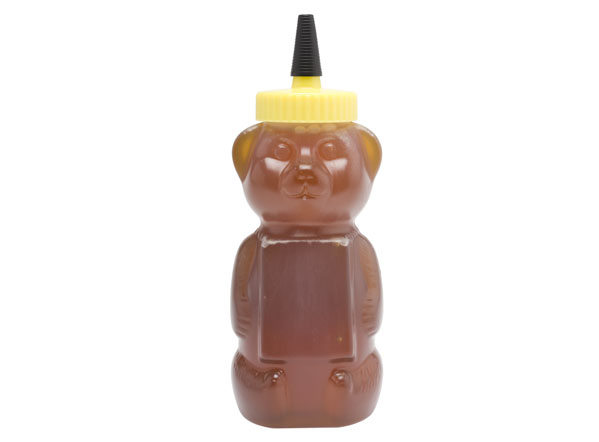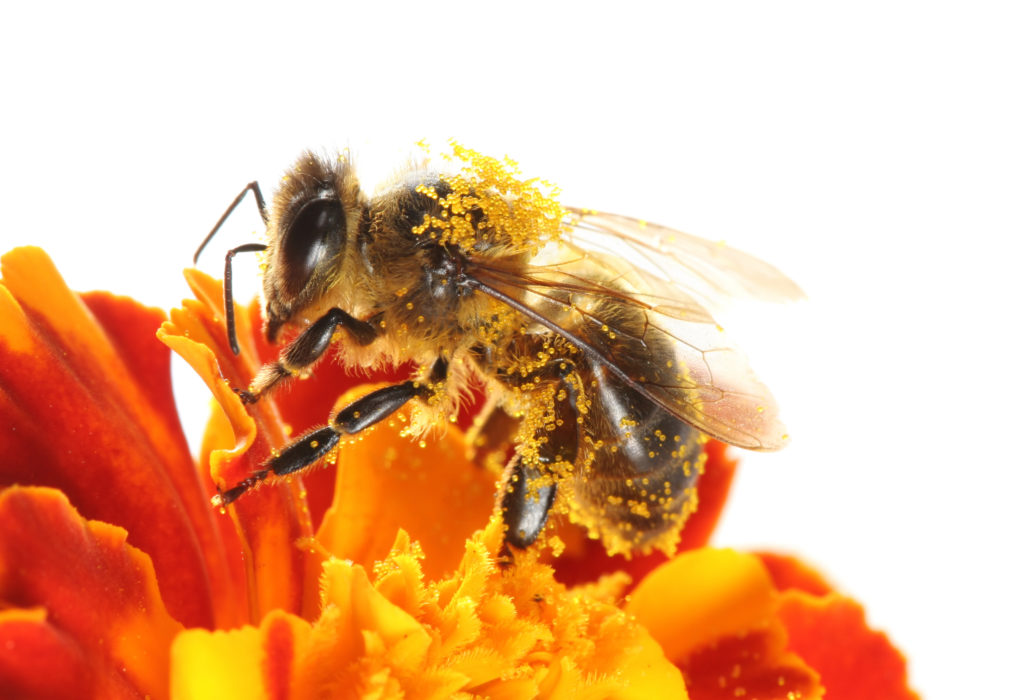
Next month, just ahead of the holidays, the new movie by director Simon Curtis opens in theaters nationwide. Starring Domhnall Gleeson and Margot Robbie, ‘Goodbye Christopher Robin’ chronicles the fall and rise of British writer A.A.Milne, ultimately made famous by the books ‘Winnie the Pooh and its sequel, ‘The House at Pooh Corner.’ Milne wrote the books for his young son, the eponymous Christopher Robin, and found international success in a post World War 1 world desperately in need of enchantment and hope. And Winnie the Pooh – the self-described ‘Bear of Very Little Brain’ – certainly enchanted readers, bringing to life a favorite childhood character whose innocence and often profound wisdom informed generations to come. And nowhere was his wisdom so evident as in his pursuit of food – honey in particular.
In his own words: ‘“Well,” said Pooh, “what I like best,” and then he had to stop and think. Because although Eating Honey was a very good thing to do, there was a moment just before you began to eat it which was better than when you were, but he didn’t know what it was called.’(1)
Unfortunately for Pooh, given the state of modern production, the days of eating honey with abandon may now be over. An ancient food, honey has been part of the human diet for centuries and has, according to the American Honey Producers, been represented culturally for more than 8,000 years – a cave painting in Valencia, Spain, being one of the oldest to depict the gathering of honey from a beehive.(2) Moreover, honey residues have been discovered in a 5,000 year old tomb and evidence exists that ancient Egyptians used the substance in their embalming rituals.
So if honey touts all of these health benefits, why are we discussing it in terms of contamination control?
In our 21st century society, honey is regarded as the perfect superfood – easily absorbed, it boasts vitamins and minerals not present in other sweeteners. Additionally, it has both anti-microbial and anti-fungal qualities, is an antioxidant, and – given its viscosity – is hygroscopic, making it an effective sealer and moisturizer. So if honey touts all of these health benefits, why are we discussing it in terms of contamination control? Well, the truth is that honey, as a natural product, is not easy to mass produce. Unlike so many of the other animals who are used in food production, bees answer to no master and will only make as much honey as they choose. In fact, as you stir that teaspoon of orange-blossom-GMO-free-organic nectar into your tea, pause for a moment to reflect on the fact that the average honey bee will produce only 1/12 of a teaspoon of honey in her entire lifetime, with her fellow hive members visiting 2 million flowers to produce 1lb of honey. That’s a labor-intensive product.
Tainted with heavy metals, antibiotics, and even lead, honey produced in mainland China and in India has made its way onto our grocery store shelves and into our food supply chain.
So, given human nature, it should come as no surprise that shortcuts are sometimes taken. Chinese producers will ship honey to countries like Vietnam, Indonesia, and Malaysia to be cut with cheap ingredients such as corn syrup, jaggery, barley malt, or plain sugar, and repackage it as coming from a different country of origin, often Russia. And it’s not only fake honey that poses a risk for consumers. A Food Safety News investigation found that genuine honey banned in the European Union successfully reaches the American market and the average consumer is unaware of the risk it poses.(3) Tainted with heavy metals, antibiotics, and even lead, honey produced in mainland China and in India has made its way onto our grocery store shelves and into our food supply chain. But how does a ‘natural’ product become tainted with antibiotics? Let’s look a little closer…
In the early 2000s, farmers in China suffered an epidemic of foulbrood disease, a catastrophic disease that can kill entire bee colonies.(4) Caused by a spore-forming bacterium, Paenbacillus larvae, foulbrood kills the bee larvae in their cells and, as the bees (or beekeepers) clean out the dead material, the spores are spread. And they are tenacious: foulbrood disease is resistant to desiccation and can survive in a viable form in both honey and in hive-related equipment for up to 40 years. The commonly prescribed treatment for foulbrood is the use of antibiotics such as oxytetracycline hydrochloride (Terramycin) but the ultimate solution lies in destroying infected hives by burning them. But, of course, that is a drastic last step that incurs significant financial losses in an industry not known for its high profit margins.
And foulbrood is not alone in presenting a significant contaminant risk. A range of other bacteria, yeasts, and microbes are frequently found in honey including Clostridium botulinum which can lead to foodborne botulism. Last year, an analysis of more than 100 samples from apiaries in Poland revealed that more than 1 in 5 samples contained an average of 190 spores in 1g of honey, the majority of these spores being of serotype botulin neurotoxin type A.(5)
Moreover, if that isn’t enough to make you reach for an alternative sweetener for your tea, a common pesticide also tends to show up in honey. In an article published this month in LaboratoryEquipment.com, the results of a study of honey samples from multiple different countries revealed the widespread prevalence of neonictinoid contamination. In what is described as a ‘citizen science’ initiative, Swiss researchers called for samples of honey to test for the presence of the pesticide. Of the 300 samples received from countries as far flung as Tahiti, 75% contained at least one neonictinoid, 45% had two or more, and 10% had four or more. Furthermore, of the samples sent from North America fully 86% were contaminated by the pesticide. Said lead author Professor Edward Mitchell of the University of Neuchatel, Switzerland: “What this shows is the magnitude of the contamination. [There are] relatively few places where we did not find any.”(6)

But what’s the big deal? Aren’t neonictinoids just another pesticide? Yes and no. Although debate rages around the safety of agrochemicals such as neonictinoid-based pesticides, the compounds have been likened to DDT, the now reviled chemical associated with a decline in the number of bald eagles and other birds in the 1960s. Applied to crops, bee exposure to ‘neonics’ occurs when the insects come into contact with the plants while foraging, and the chemicals have been implicated as a potential cause of the on-going crisis of Colony Collapse Disorder (CCD). During the past decade, a 30% – 90% mortality rate for honeybees in some colonies has resulted in a general decline in world production of honey since 2007, and according to the Scientific World Journal the U.S. is especially hard hit.(7)
So what can we do about the trifecta of CCD, adulterated low-grade product, and microbial/fungal/bacterial widespread contamination?
Aside from closely scrutinizing all honey imports – perhaps even following the European Union in instituting a complete ban on honey from countries like China and India – food safety standards are key. In the U.S., in order to protect consumers from pollutants and pathogens honey must comply with a small raft of food safety standards including adherence to maximum reside limits (MRL) as listed in Title 21, Part 556 3, and sections 402 and 403 of the Federal Food, Drug, and Cosmetic Act.(8) And while the FDA has previously not wished to institute further regulation on the branding, labeling, and potential adulteration of the product, industry producers are also active in taking a more creative line.
…beekeepers in Switzerland have devised their own system of self-control based on Hazard Analysis and Critical Control Points (HACCP) protocols.
With an eye to what our European cousins are doing to combat the problem, apiarists here have noted that, in true Teutonic fashion, beekeepers in Switzerland have devised their own system of self-control based on Hazard Analysis and Critical Control Points (HACCP) protocols. Formulated to be as straightforward as possible, the self-control system analyses the hazard of antibiotic contamination and determines the critical control point to be the control of the bacterium that causes foulbrood. Control measures include avoidance of antibiotic treatments that could result in residual contamination and clear documentation of all steps taken in Good Apicultural Practice (GAP). Furthermore, significant emphasis is placed upon excellence in hive and operator hygiene alongside the use of alternative measures to control issues such as those of wax moth infestation. And finally, best practices for the harvesting and storage of honey are also painstakingly detailed, with water content reduced to less than 20%, an optimal storage environment maintained at below 20°C, and the use of non-corrosive metal or glass storage containers that prevent air leaks that could compromise product quality.(9)
And closer to home, True Source Certification could hold the key to consumer confidence and safety.(10) An initiative by members of the honey industry, True Source aims to call attention to illegal and unethical practices which it estimates cost the U.S. more than $100 million annually. As an international coalition, its board members hail from as close as Canada and as far away as Argentina and have established the mandate of protecting consumers and bolstering the reputation of their product as a high value food. When a honey product is certified, a chain of traceability is formed from the beekeepers to the processors and exporters/importers, and this chain is verified by an independent third party auditor. In the same way that a specific symbol is applied to the labeling of kosher products, True Source certified items sport a bee logo with a bold check mark – a sign designed to instill consumer confidence and peace of mind.
And when it comes to honey – a high value consumable long prized as healthy and nutritionally sound – we should be able to have confidence that what we are eating is pure, unadulterated, and not cut – for instance – with sugar solution. After all, Winnie the Pooh – that epicurean aficionado of the pure amber nectar – would most certainly not approve.
Do you enjoy honey? Do you have a favorite type? We’d love to know your thoughts…
References:
- A.Milne, ‘Winnie the Pooh’
- http://americanhoneyproducers.org/
- http://www.goldenblossomhoney.com/education_bees.php
- http://www.foodsafetynews.com/2011/08/honey-laundering/#.WdwFlZKkxRI
- https://www.degruyter.com/view/j/jas.2016.60.issue-2/jas-2016-0020/jas-2016-0020.xml
- https://www.biosciencetechnology.com/news/2017/10/not-so-sweet-75-percent-honey-samples-had-key-pesticide?cmpid=horizontalcontent&__hstc=161147298.b0c76b5f76a3bdf3e7d98749dd676e47.1507572364630.1507572364630.1507572364630.1&__hssc=161147298.1.1507572364630&__hsfp=1498605289
- http://www.sgs.com/~/media/Global/Documents/Technical%20Documents/Technical%20Bulletins/SGS%20FOOD%20Hot%20Source%20Nov%202013%20EN%20v6%20p14%2015%20Honey%20contamination.ashx
- https://www.fda.gov/food/guidanceregulation/guidancedocumentsregulatoryinformation/ucm389501.htm
- http://www.apimondia.com/apiacta/articles/2005/bogdanov_1.pdf
- http://www.truesourcehoney.com

Pingback: Update: Tainted Treats: To What Extent Does Honey Represent a Nutritional Friend of Foe? - Food Contact Surfaces